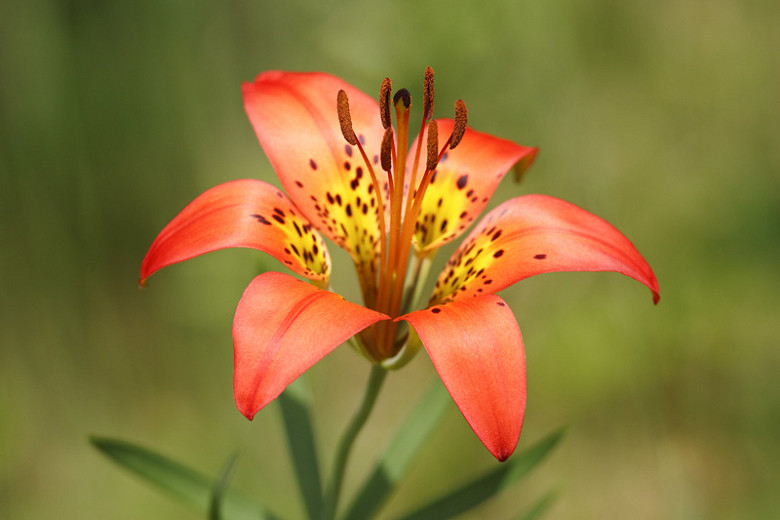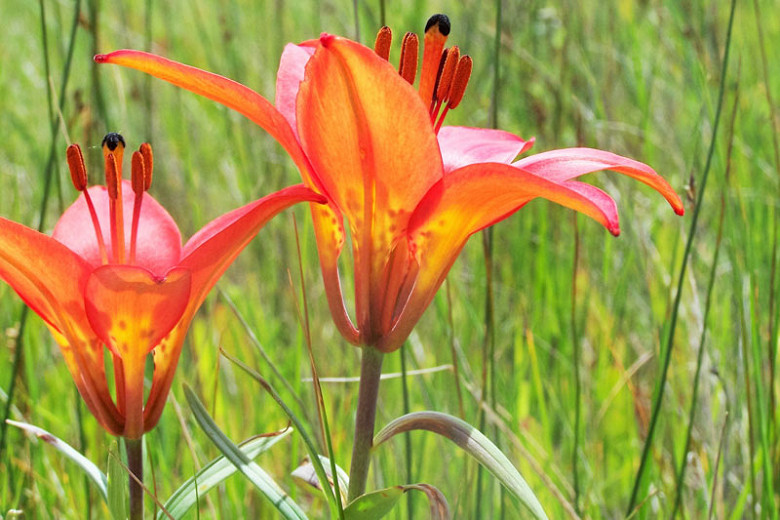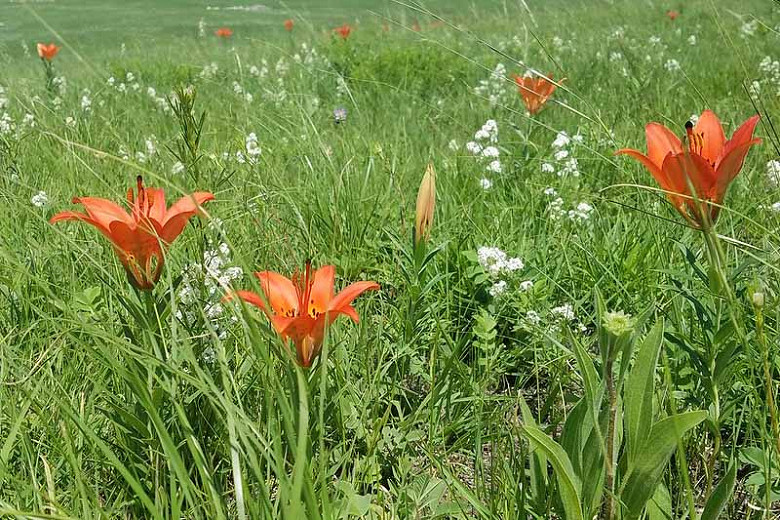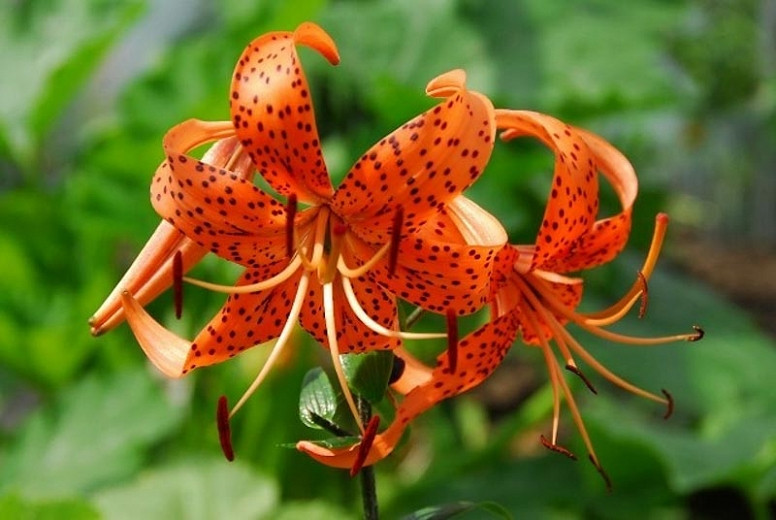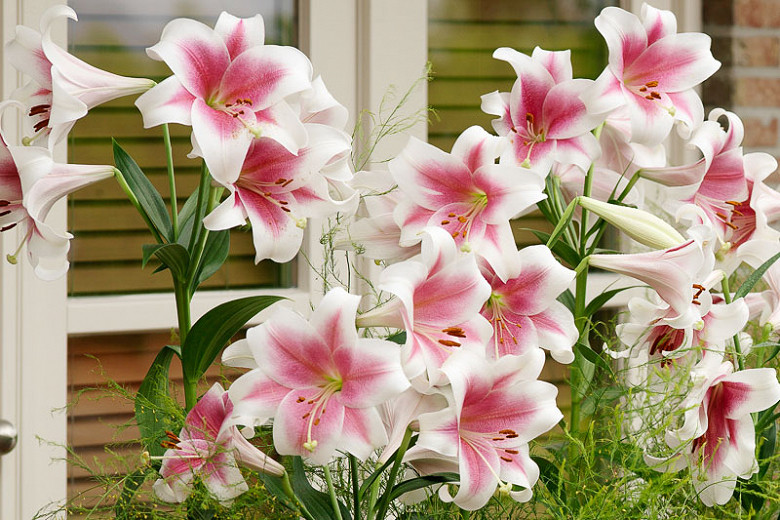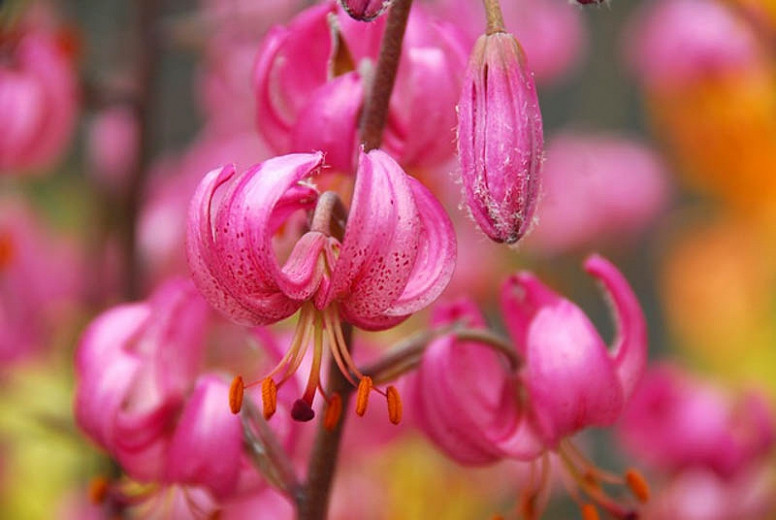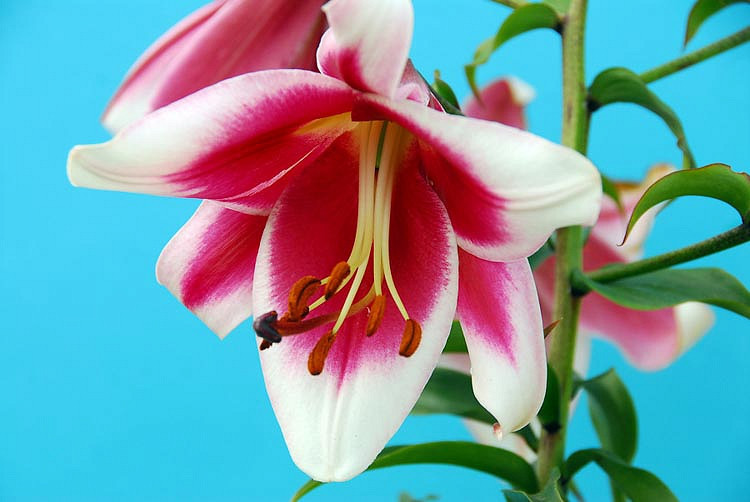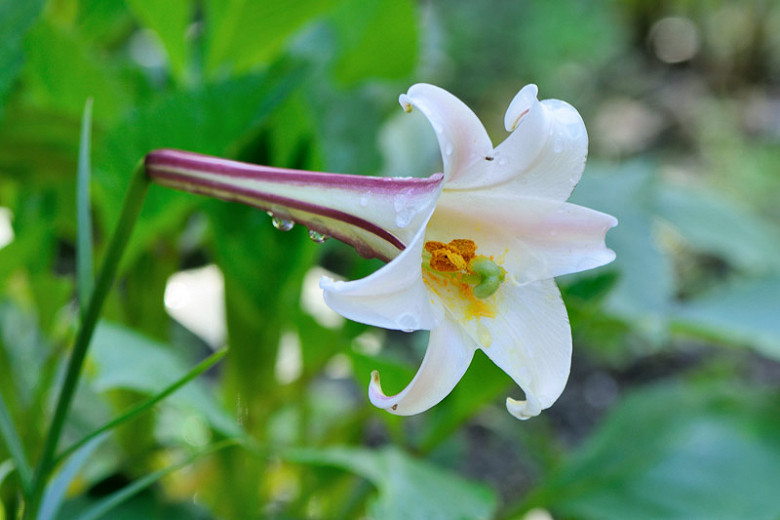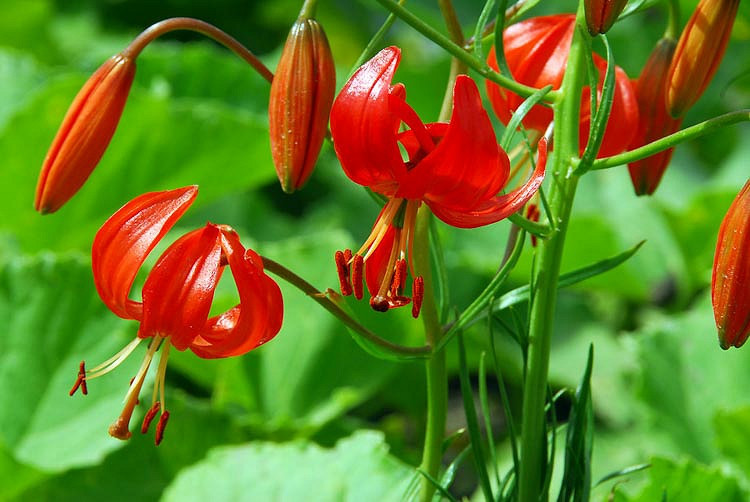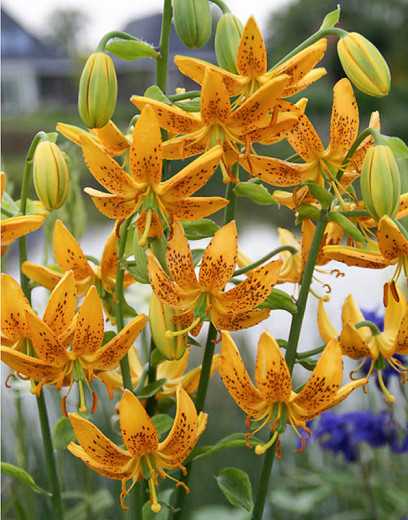Lilium philadelphicum (Wood Lily)
One of the most widely distributed lilies in North America, Lilium philadelphicum (Wood Lily) is a perennial wildflower with flamboyant, brilliant red-orange flowers, up to 1-3 in. wide (2-7cm). Blooming in mid to late summer for up to 5 weeks, the blossoms are elegantly spotted with purplish-brown freckles. Unlike most Lily species which favor pendant blossoms to protect their pollen supplies, Wood Lily features upward-facing flowers, seeking to attract passing hummingbirds and butterflies to help with pollination. There are usually 1-4 flowers per plant. They are borne atop an unbranched stem clad with whorls of 3-6 narrow leaves, 1-3 in. long (2-7 cm). Cross-pollination is necessary for wood lilies to produce seed, so if seed is desired, plant several bulbs. Easy to grow and low care, Wood Lily comes back year after year. It works well in a garden meadow, along woodland edges, and constitutes an excellent border plant, providing striking color and contrast to grasses or perennials. Victim of its beauty, Wood Lily is too often picked by visitors, and it tends to disappear quickly from intensively grazed meadowland.
- Grows up to 18-36 in. tall (45-90 cm) and 9-12 in. wide (22-30) cm.
- Performs best in full sun or part shade in sandy to loam, moist (occasionally dry), well-drained soils. Full sun is best for flowering.
- Great for butterfly gardens, prairies, meadows, cottage gardens, and native plant gardens.
- Bulbs may require protection from rodents as Wood Lily is quite popular with rabbits and deer.
- Propagation is easiest from the division of the scaly bulb, which can be dug as soon as the plant goes dormant and the seed is ripe in late summer. Seeds planted just after collection will usually germinate in the fall and over winter.
- Toxic to cats (though not for dogs or any known species)
- This Lily is a member of the Species and cultivars of species Division (IX) which includes all species and their subspecies, varieties, and forms, and cultivars selected therefrom (excluding those derived from formosanum, longiflorum, philippinense, and wallichianum). There are 9 different types of lilies classified by the Royal Horticultural Society. And they are all real eye-catchers!
- Native from the east coast to the midwest of North America.
Requirements
| Hardiness | 4 – 7 |
|---|---|
| Plant Type | Bulbs, Perennials |
| Plant Family | Lilium – Lilies |
| Exposure | Full Sun, Partial Sun |
| Season of Interest | Summer (Mid,Late) |
| Height | 1' – 3' (30cm – 90cm) |
| Spread | 9" – 1' (22cm – 30cm) |
| Water Needs | Average |
| Maintenance | Low |
| Soil Type | Loam, Sand |
| Soil pH | Acid, Alkaline, Neutral |
| Soil Drainage | Moist but Well-Drained, Well-Drained |
| Characteristics | Cut Flowers, Showy |
| Native Plants | United States, Midwest, Illinois, Indiana, Iowa, Michigan, Minnesota, Nebraska, North Dakota, Ohio, South Dakota, Wisconsin, Northeast, Connecticut, Delaware, Maine, Massachusetts, Maryland, New Hampshire, New Jersey, New York, Pennsylvania, Rhode Island, Vermont, Rocky Mountains, Colorado, Montana, Wyoming, Southeast, Alabama, Arkansas, Georgia, Kentucky, North Carolina, Tennessee, Virginia, West Virginia, Southwest, New Mexico, Texas |
| Attracts | Bees, Birds, Butterflies, Hummingbirds |
| Garden Uses | Beds and Borders |
| Garden Styles | Informal and Cottage, Prairie and Meadow |
